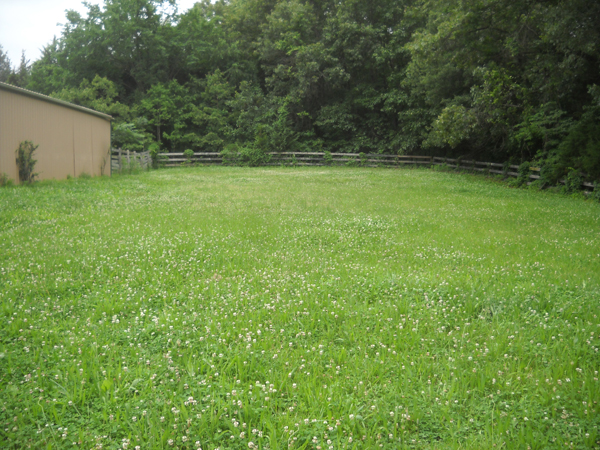Climate change may be causing laminitis

This paddock changed from sand to grass over 18 years before erupting in weeds in 2015.
Post reviewed Nov. 27, 2022
Climate change is having at least two effects on vegetation that may be increasing the incidence of laminitis in horses.
First, weeds are proliferating due to increased carbon dioxide, rain and heat in the atmosphere, according to scientists at Purdue University and France’s Climate-Environment-Society consortium in Europe.
The global concentration of carbon dioxide in the atmosphere — the primary driver of recent climate change — has reached 400 parts per million (ppm) for the first time in recorded history, according to NASA data.
One carbon dioxide expert (Dr. Charles Miller) says these CO2 values are more than 100 ppm higher than at any time in the last one million years (and maybe higher than any time in the last 25 million years).
Second, the increased acid in the atmosphere from coal plant and auto emissions is leading to higher acid in rainwater, which is changing the makeup of soil, depleting nutrients such as magnesium, and giving an even bigger advantage to weeds over native grasses.
Weeds have more nitrogen in their makeup in general, and nitrogen has been implicated in laminitis.
Perhaps more important, weeds hold a lot more iron, and excess iron is known to increase insulin resistance.
Dr. Frank Reilly, an equine veterinarian in Pennsylvania and leading advocate for laminitic horses, tested common pasture weeds for their iron level and posted the results on his website (scroll down to the tab titled “Equine Insulin Resistance High Iron“) in 2014 along with photos of the weeds. He said horses will seek out chickweed, and its super high iron content causes a huge surge in insulin levels.
He lists several scientific articles that discuss how iron drives insulin resistance.
In my state of Missouri, the soil is largely red clay, and the red color in the soil is due primarily to iron oxides, according to the USDA.
The weeds in my state have access to more iron to begin with, so acidic soil and weed proliferation are a recipe for disaster for a horse here.
Add to that the well-meaning but misguided addition of iron to everything horses eat.
My horses’ trace mineral blocks, which they had access to from 1997 to 2012, were 25 percent iron, according to the manufacturer’s website. I threw them away in 2012 and wish I had never heard of mineral blocks.